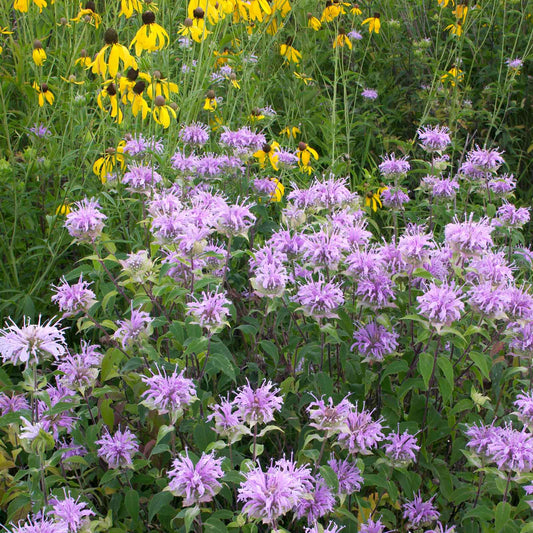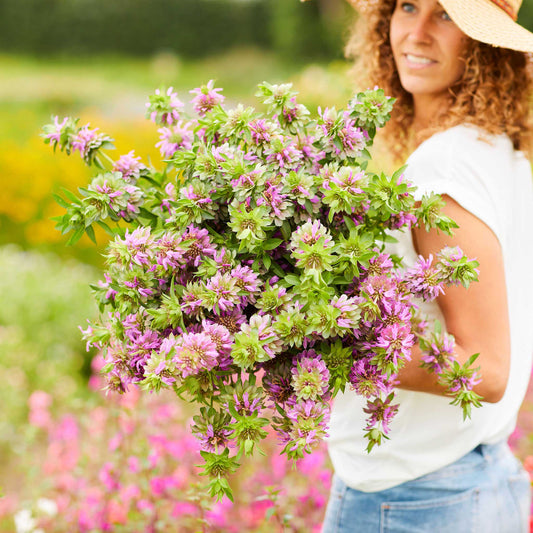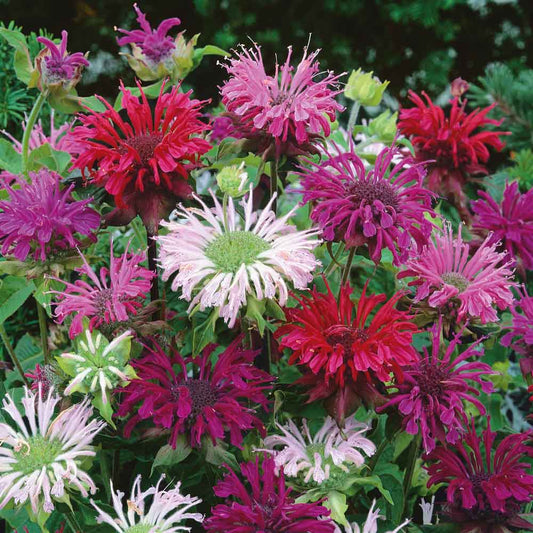-
main-collection-product-grid

Bee Balm Seeds - Wild Bergamot
This thistle-like wildflower is the preferred bloom of bees everywhereBee Balm Seeds - Wild Bergamot
This thistle-like wildflower is the preferred bloom of bees everywhereRegular price As Low As $5.99Regular priceUnit price per -
main-collection-product-grid

Lemon Mint Seeds
This versatile herb is commonly enjoyed in the flower garden and medicine cabinetLemon Mint Seeds
This versatile herb is commonly enjoyed in the flower garden and medicine cabinetRegular price As Low As $4.99Regular priceUnit price per -
main-collection-product-grid

Bee Balm Seeds - Mix
Colorful blooms with a delightful fragranceOut of StockBee Balm Seeds - Mix
Colorful blooms with a delightful fragranceRegular price $6.99Regular priceUnit price per
Growing heirloom monarda seeds in your garden
- Thrives in bright, sunny growing areas
- Very fragrant and attractive to pollinators
- Deer resistant and drought tolerant
- Great for container gardens
Bee balm is a daisy-like perennial with purple blooms and dark green, saw-edged leaves. Lemon mint is an annual type with a citrus scent and edible leaves that give a lemony flavor to salads, drinks, and cocktails! Lemon mint grows one to two feet tall and self-seeds readily, whereas bee balm grows much higher, reaching up to four feet tall. Hardiness zones 3 through 10 are ideal for both cultivars.
Sow bee balm directly in the fall, or start the plant inside with lemon mint in late spring. Heirloom monarda is a resilient plant that can withstand bad soil and heat waves. If you don't plant monarda in well-draining soil, it will succumb to root rot. Because both bee balm and lemon mint thrive in the sun, choose a location that receives at least six hours of sunshine every day.
When young plants are around six inches tall, go through and remove the inner stem with a clean cut. This will stimulate the plants to spread out and produce more flowers as a response. For optimal results, prune back perennial bee balm cultivars in the spring. Pinch your heirloom monarda plants at different times to stagger blossoming and lengthen the bloom season.
Heirloom monarda is one of the easiest plants to cultivate, so there's no reason not to include it in your garden. Native pollinators and pollinating insects benefit from the abundance of habitat and food provided by this North American wildflower. Put bee balm or lemon mint next to your veggies and see if you don't obtain a bigger harvest this year, because pollinators drawn to your heirloom monarda will most likely stop by your cucumber row as well.
If you're interested in herbal medicine, you'll be pleased to learn that heirloom monarda contains a number of therapeutic properties. Monarda was grown in Native American villages to relieve headaches, stomachaches, and fever. Heirloom monarda has now been demonstrated to have antibacterial properties and to function as a fever reliever. Monarda leaves, it should come as no surprise, help with a variety of stomach disorders.
Monarda is a versatile plant that may be used in a variety of ways. You won't be disappointed with either the Bee Balm or Lemon Mint varieties of monarda, whether you want to utilize it in cut flower bouquets, culinary recipes, or medicinally.
For more information about planting, growing, and harvesting heirloom monarda seeds, see the Monarda Seeds Planting Guide.


